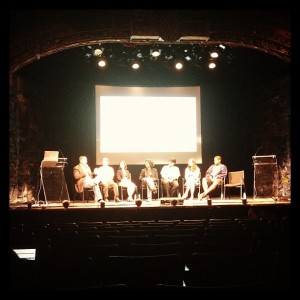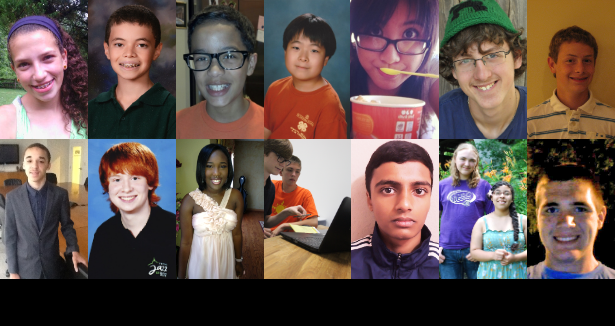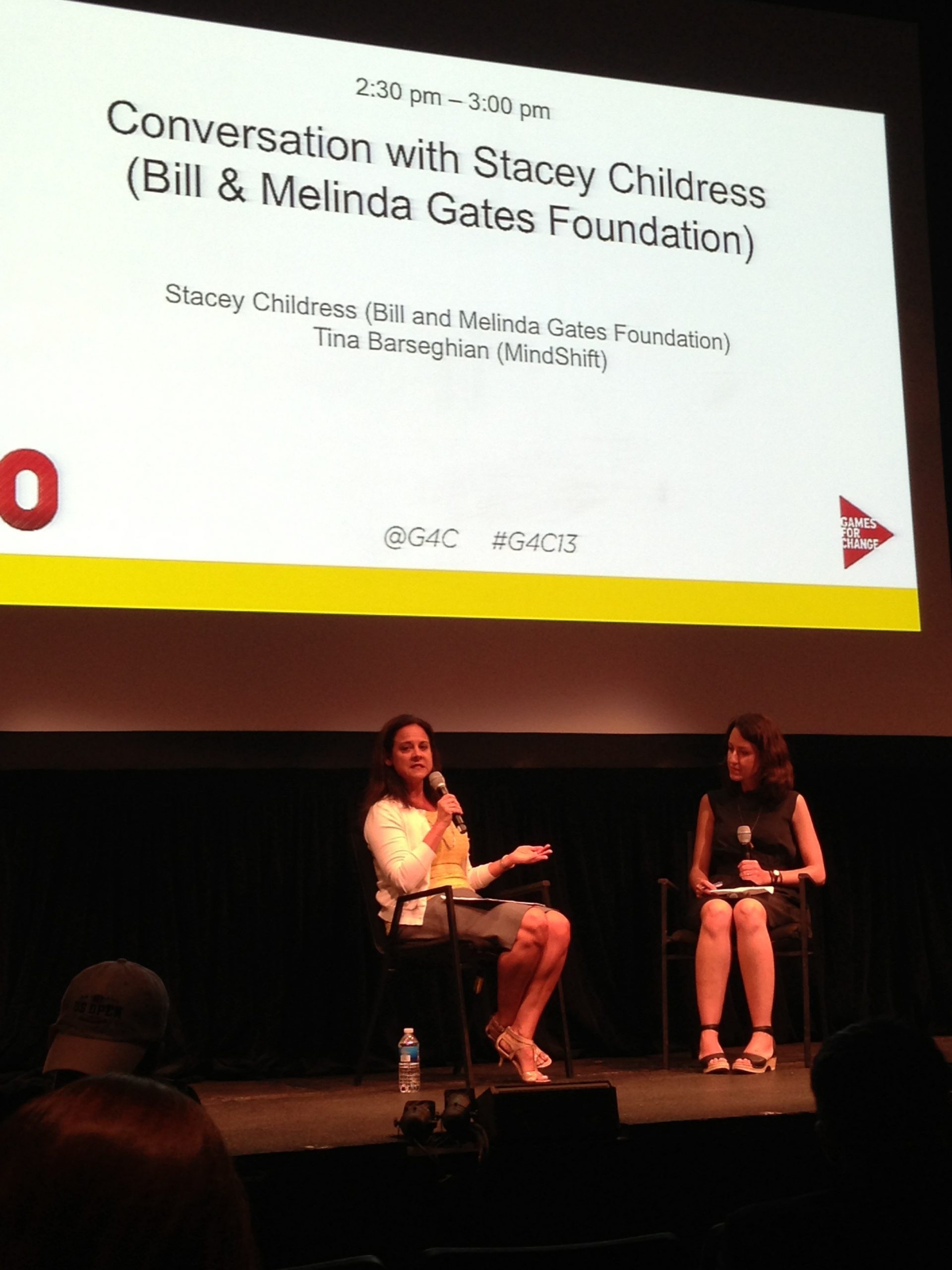
On Wednesday, a panel of education professionals, teachers, and tech-savvy students took the stage for the final day of the 10th annual Games for Change Festival held at New World Stages in New York City. Moderated by Forbes blogger, Jordan Shapiro, the panel participants discussed their experience with the National STEM Video Game Challenge, a national program founded by the Joan Ganz Cooney Center and E-Line Media that encourages youth in grades 5-12 to create playable video games that utilize STEM-related skills such as creative problem solving and systems-based learning.
Panelists included:
- Brian Alspach – E-Line Media
- Barry Joseph – American Museum of Natural History
- Christa Avampato – Joan Ganz Cooney Center
- Sean Nadel – The Science and Medicine Middle School 366 (Canarsie, Brooklyn)
- Julia Weingaertner – Rising sophomore at Stuart Country Day School (Princeton, NJ)
- Alexander Forrester – graduating senior at Benjamin Banneker Academy for Community Development (Brooklyn)
At the start of the panel, Jordan asked Brian, Barry, and Christa to discuss the set-up of the STEM Challenge as well as its history and mission. The trio explained that the goal of the Challenge is to empower young people to take an idea through the development process to produce a finished product that can be shared with and enjoyed by others. Now in its third year, the Challenge is about to announce its 2013 winners. Brian and Christa both attested to the increased complexity and intricacy of the game designs created by the youth who entered the Challenge this year as compared to the previous two years. Part of that is due to the ever-more sophisticated tools hitting the market and to the enhanced design and coding skills that students are acquiring at a young age through their schools, after-school programs, and on their own.
After hearing from the education professionals, Jordan turned his attention to Sean Nadel, a New York City public school teacher who current teaches middle school Latin, Robotics, and Game Design. Sean spoke about the importance of reaching each individual student with curricula that teach them common core skills in innovative ways.
“I have students who have difficulty writing traditional book reports and essays. However, when I ask them to write about a game they’ve designed or a robotics project they’re working on, the words just flow without any problem. They realize that they are capable writers. My job is to help them discover that they can succeed when they work on projects and materials that interest them,” said Sean.
This panel on the STEM Challenge was unique because it allowed young people the chance to express their personal experiences with games as learning tools. Julia demoed her winning game from the 2012 National STEM Video Game Challenge. She and her classmate created a video game that helps very young children learn the concept of math inequalities (greater than / less than). They based the game on the way their teachers taught them to master inequalities and then they made a colorful, interactive game that would entertain and teach young children.
“It was a great experience,” said Julia. “When you first create code, there is always something that’s not quite right and you have to go through line by line to identify the problems and find different ways to solve each one. I didn’t like this class at first, but now I really like writing code. I’m signed up to take a computer programming class next year at my school.”
After Julia spoke specifically about her game, Alex shared his experience as a Youth Leader with Global Kids, an organization that “ensures that urban youth have the knowledge, skills, experiences and values they need to succeed in school, participate effectively in the democratic process, and achieve leadership in their communities and on the global stage.” Alex learned and then taught game design to other New York City youth through a series of workshops sponsored by the Challenge and hosted by a variety of institutions such as the American Museum of Natural History that belong to Mozilla’s Hive New York.
“I didn’t know anything about game design when I started the program. I wasn’t even a big gamer myself. But we had good instructors who taught us game design principles, Gamestar Mechanic (a platform created by E-Line Media), and then taught us how to teach game design. We had to learn all of this content very quickly so that we could teach it to other kids,” said Alex.
He went on to talk about the confidence it gave him to be a teacher and to see other kids learning from him.
“I never thought of myself as someone who could do something like this. I was kind of shy. Now I can pitch game concepts to other people and teach people how to pitch their own game idea.”
The panel wrapped up with Jordan asking where the STEM Challenge is headed. In 2014, the Challenge will focus its efforts on boosting mentorship materials for teachers, parents, and after-school programs, further engaging the teacher community, and increasing access to more youth across the country. Details about the 2014 Challenge will be available later this year at http://stemchallenge.org.



